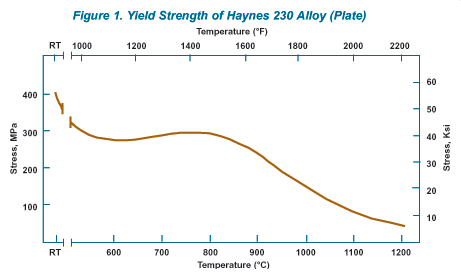The greatest challenge of the copper motor rotor project was die casting copper economically. Short die life brought on by the high temperature of molten copper, rendered the die casting of copper too costly a process. A high-temperature material suitable for molten copper was needed to make the process economically viable. Project trials proved Haynes 230 Alloy to be that material. C. Mel Adams, ScD, PE, a consultant to CDA, recently explained what makes Haynes 230 the material of choice for die casting copper.
"The great advantage of 230 Alloy is the absence of any solid state phase changes, all the way from room temperature to melting. This greatly contributes to its resistance to cracking, not only during its service campaign but in welding," he explained. "Most high-temperature alloys are so susceptible to weld cracking as to be considered almost non-weldable. Since, even with 230 Alloy, some thermal cracking is to be expected, given the severe service of die casting copper, maintenance by weld repair is of major significance. By routine weld repair, it will be possible to maintain die life indefinitely."
The strength of 230 Alloy was also considered an important property in its selection as a die material for casting copper. Adams explained that strength is important because it reflects the ability to withstand the thermal stresses associated with repeated exposure of the die surface to rapid heating and cooling. However, “strength is not the only quality of significance in resisting the damage inflicted by thermal cycling,” he explained. "The 230 Alloy exhibits superior ductility at high temperature, and is thus well-suited to the tensile and compressive strains imposed by repeated thermal excursions. In other words, it can better tolerate the stretching and compression, even though its high-temperature strength is somewhat lower than that of Alloy 617 [which was also a candidate die material]."
Adams is currently working on a heat-flow analysis for the copper motor rotor project. The following are some of his initial findings. “We now have some information on how fast the liquid copper solidifies, which will influence its best rate of delivery into the die,” he said. He also found that "the maximum die surface temperature is generally slightly below 1000°C - a value quite determinative of die life - except, of course, for the extension of die life by maintenance welding."
He said he believes the next step for the project is further testing in the field which would likely refine weld repair techniques and improve procedures for the handling and delivery of liquid copper. As a result, constant modification of the die design would be necessary.

Adams also attended the project's demonstration meeting in January and was impressed with its accomplishments thus far. "Almost unbelievable! I really didn't believe die casting of copper was practicable. But, they really did it - an amazing accomplishment - I'm left with no doubt the program will fly."
Adams is a graduate and former professor of the Massachusetts Institute of Technology. He was also a professor at the Universities of Wisconsin, Cincinnati and Carnegie-Mellon. He is presently a consultant in foundry and welding technology and has worked in that capacity with Kennecott Copper, U. S. Steel, USN Bureau of Ships, U.S. Atomic Energy Commission, and the U.S. Army, among others.
